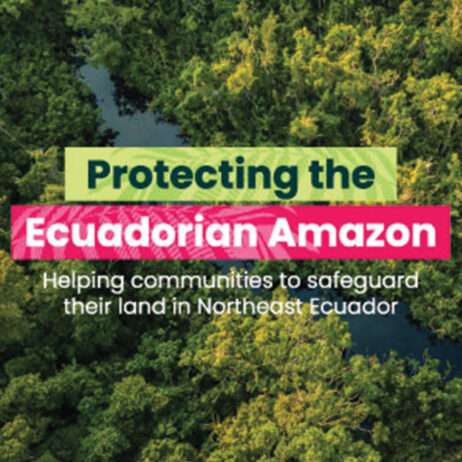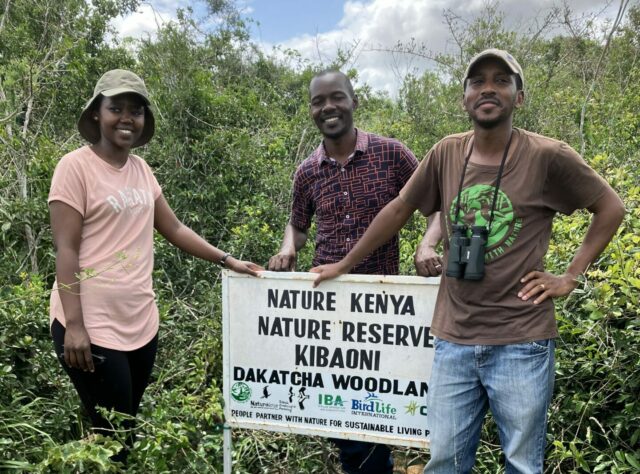
Mercy visited a tapestry of landscapes in Kenya, including the Taita Hills, Amboseli and the Dakatcha Woodland. Credit: Mercy Kariuki
This year, Mercy Kariuki – WLT’s Conservation Programmes Manager– visited Kenya to check in with WLT’s three Kenyan partners. We chatted with Mercy to understand more about the impacts that our partners are having on the ground in this ecologically diverse country. She reflects on the encounters she had with people engaged in nature conservation and with some of the country’s most iconic wildlife.
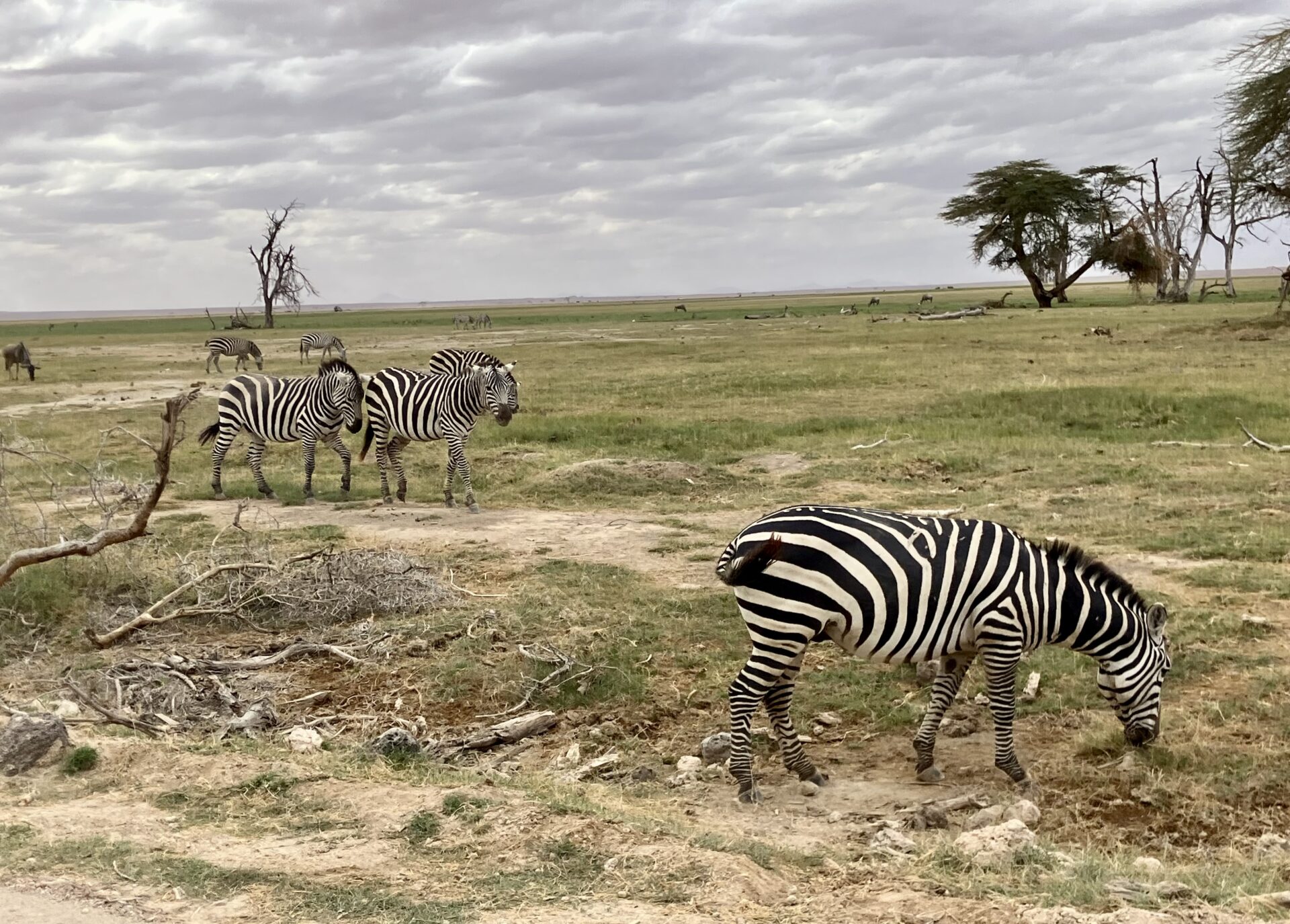
Zebra’s roaming the savannah of Kenya’s Amboseli. Credit: Mercy Kariuki.
WLT: Can you tell us about why you went to Kenya, and who you were visiting out there?
Mercy: The Programmes team at World Land Trust go on field visits to keep updated with what is happening on the ground with our partners. It is an incredibly important part of our work, to see the impacts that we are having in project sites. Of course, it’s always special to see how much of a difference our supporters are making out in their respective contexts.
On this particular occasion, I went to Kenya to meet with Nature Kenya, Big Life Foundation, and A Rocha Kenya. The aim was to see how their respective conservation missions were going, how local communities are being worked with, as well as understand if there were any challenges being faced by our partners in the implementation of projects.
My visit to Kenya lasted two weeks, and involved visiting so many different landscapes I found that the time went by so fast. In this short time, I visited a tapestry of landscapes all woven together with the same richly biodiverse thread.
The first place I went to was the Dakatcha Woodland where our partners A Rocha Kenya and Nature Kenya work. This is one of the world’s top ten most threatened forest hotspots and is host to thirteen IUCN Red Listed species.
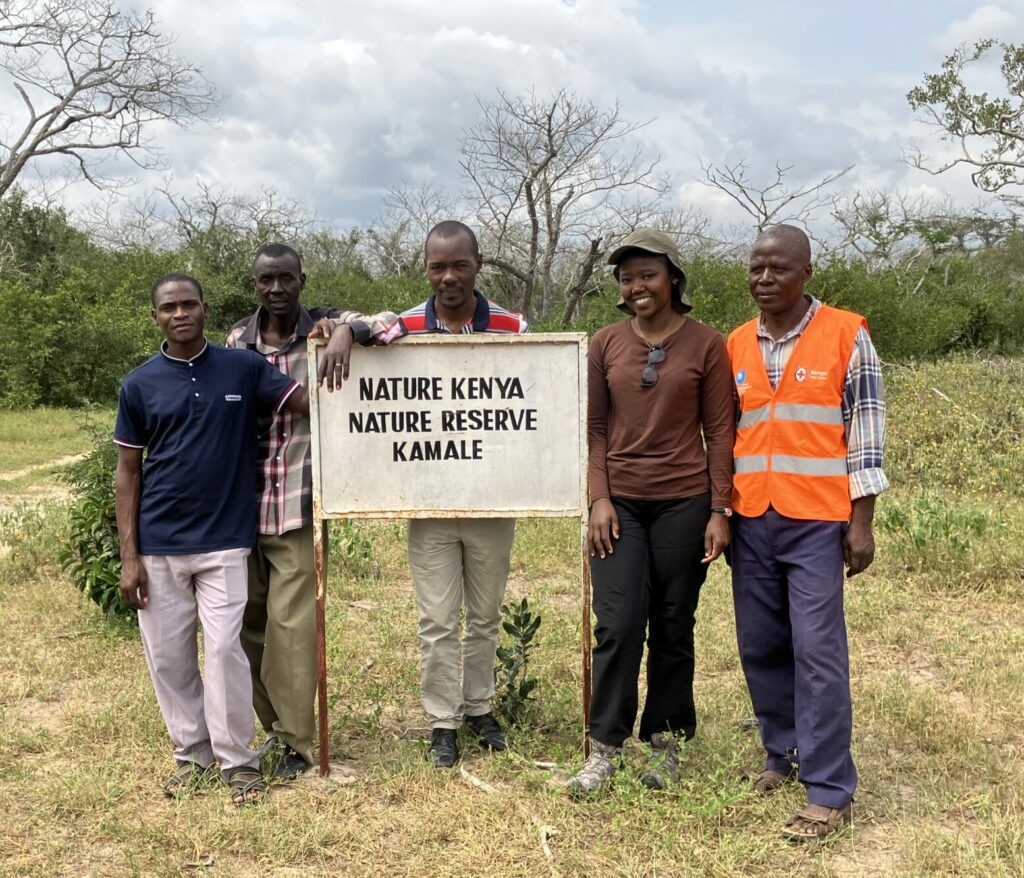
Mercy visited the Dakatcha Woodland nature reserve where Nature Kenya work to protect vital forest habitat. Credit: Mercy Kariuki
Then I travelled to the Taita hills, another of the sites where Nature Kenya work. This is a delightful place on the south-eastern side of Kenya and full of endemic species. Gloriously refreshing, due to it being in a cloud forest, the hills can reach up to 2,200 metres above sea level whilst their bases are set in the lowland Tsavo plains.
Amboseli came next where our partner Big Life Foundation is working with semi-nomadic Maasai pastoralists over the years to create within the Amboseli ecosystem to the benefit of elephant and lion populations as well as the iconic African Painted Dog.

Elephants are one of Amboseli’s iconic species. Kenya’s recent and first wildlife census in 2021 indicated that the number of elephants has increased from 16,000 in 1989 to 36,288, the highest proportion of which are in Tsavo. Credit: Mercy Kariuki
WLT: What is it about site visits that you enjoy most?
Mercy: Oh, I would say straight away that I love getting away from the desk! It’s such a valuable and purposeful thing to be able to visit the sites where our partners work. I am always talking with our Kenyan partners virtually over emails and Teams calls. Going to the project sites offers a window into how conservation happens from their perspective, aside from learning about what they are doing in the quarterly reports they send us.
It brings me great joy to be able to sit down with communities and talk in the local language with them. Actually, it makes me feel so grateful that I can do this. Any sense of shyness dissipated when I was in Kenya, as being able to speak in the language of our partners and local people meant I could connect on a deeper level and made me feel a part of the community straight away. Language is like wearing a pair of unique glasses; it has this ability to let you see things in a different way.
WLT: How would you describe the feeling of being in Kenya’s diverse landscapes to people who may have never visited the country?
Mercy: Kenya is simply beautiful. While tropical, it is nevertheless a country of contrasts, and its climatic diversity is what has given it such immense biodiversity.
Let’s start with the Dakatcha woodland in the south coast. Here, I encountered a diverse mix of savannah, occasional wetlands and intact forest ecosystems mostly dominated by Zebrawood (Brachystegia spiciformis) and the evergreen Cynometra webberi. When I visited in August, it was humid, cool, with a bit of light rain which made my visits to WLT-supported reserves refreshing. As Kenya was just coming out of a long dry period from mid-2021, the rain was light as the next expected rain season was from October – December.
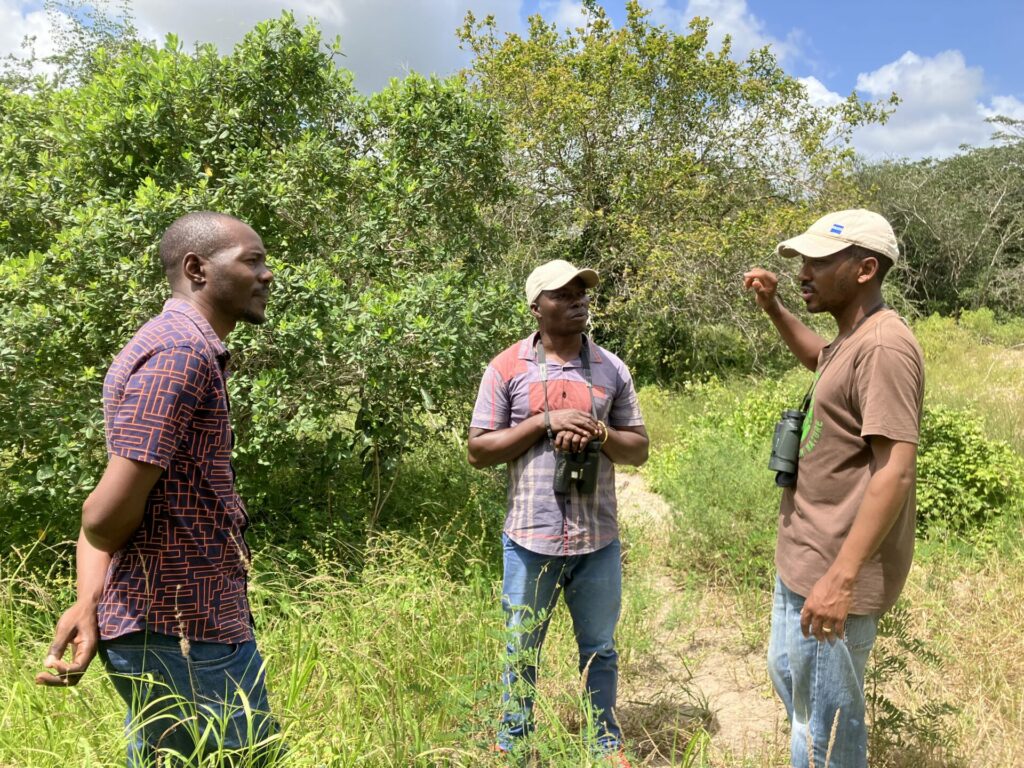
Our conservation partners work closely together in their daily operations. Credit: Mercy Kariuki
My visit to the Taita hills – where Nature Kenya works – was very special because these cloud forests host so many incredible endemic species. The summits of the Taita hills are covered in clouds that come in from the Indian Ocean which make the forests wet and humid. This creates the perfect conditions for several bird species such as the endangered Taita Apalis (Apalis fuscigularis) (CR) and Taita Thrush (Turdus helleri) (EN) among others.

The ancient volcanic hills of Taita Hills formed more than 100 million years ago. Clouds that come in from the Indian Ocean create humid and wet conditions here. Credit: Mercy Kariuki
A far cry from the damp mists of the Taita hills cloud forest, I arrived at Amboseli; dry, hot, and dusty. Amboseli located at the footsteps of Mount Kilimanjaro (the highest mountain in Africa) itself is a place of diverse landscapes. Within the entire Amboseli biosphere reserve there is mountains and dry mountain forest, savannah rangelands, wetlands and swamps. This means it hosts a bountiful mix of species. Vultures glide through the skies, high above the already towering heads of Giraffe (my favourite animal by the way), whilst Flamingo wade elegantly through the alkaline lakes. Other species I saw here include Oryx and Wildebeests, Lions and Elephants so characteristic of this region.
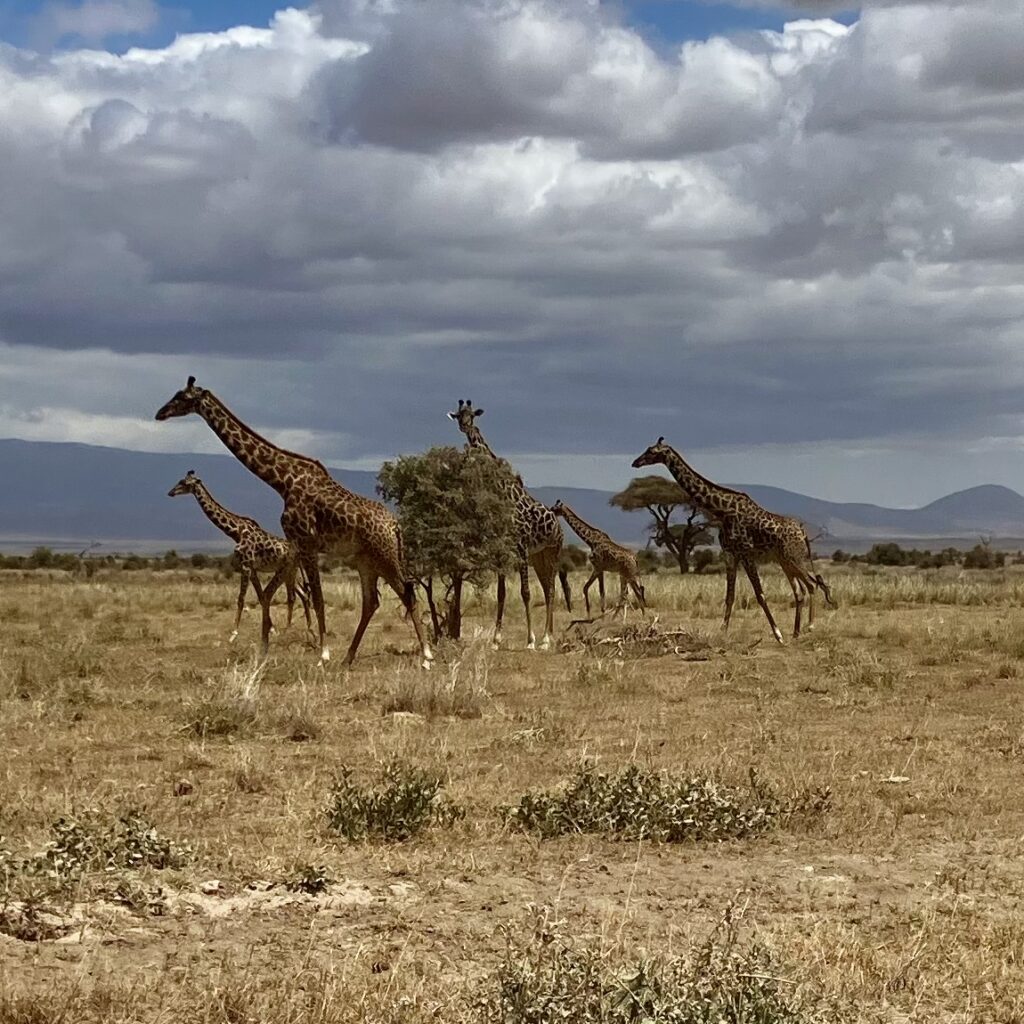
The tallest living terrestrial animal and the largest ruminant, Giraffes browse on vegetation that other herbivores cannot reach. Credit: Mercy Kariuki
WLT: As someone who grew up in Kenya, how did it feel to be visiting WLT’s Kenyan partners?
Mercy: Quite honestly, it brought a feeling of home that sometimes gets lost when I am sitting at the desk. But it also reminded me how rich Kenya is in biodiversity and how significant its contributions are to biodiversity conservation and our global natural heritage. I felt happy knowing that the work that WLT does, aside from the desk work, is essential for enabling our partners and their communities to protect ecosystems. It reasserted my purpose and personal mission in nature conservation – to support the people out doing the groundwork.
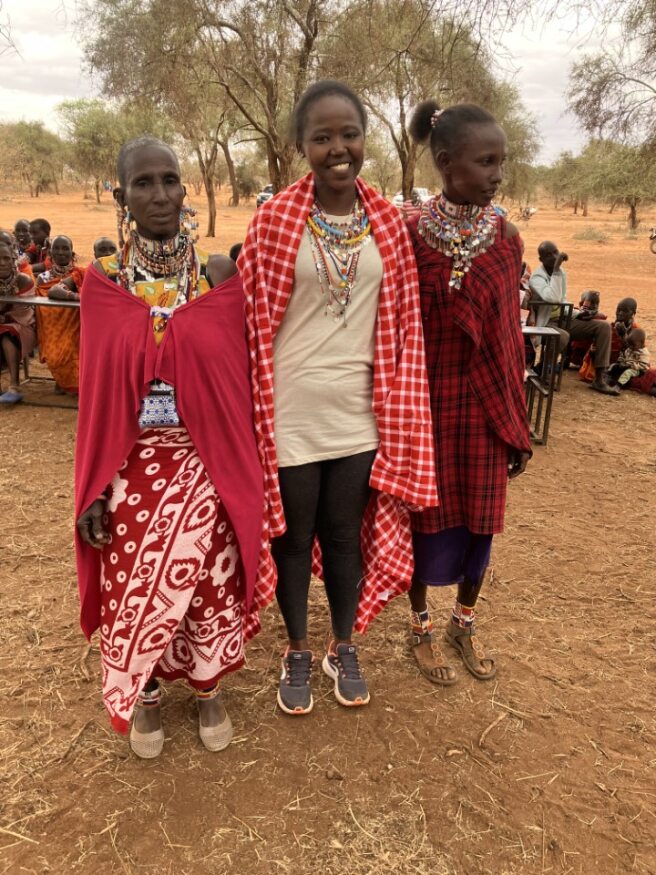
The Maasai are today semi-nomadic and pastoral: they live by herding cattle and goats. Credit: Mercy Kariuki
WLT: Community-centred conservation is a vital element of WLT’s work; what does this look like in Kenya?
Mercy: Involvement and engagement, first and foremost. Most of the key habitats or ‘protected areas’ in Kenya are often inhabited or stewarded in some way by people. Therefore, it is important that communities feel some sense of ownership of these projects.
I can give an example of this in the Dakatcha woodland. Here, small groups are formed within different villages when then make up a larger community conservation group. Most of the people in these groups want to continue protecting these areas because they know that, beyond the bigger picture importance of nature conservation, they will benefit as they are connected to these ecosystems for their wellbeing, livelihoods and so on. Tourism is also important in many cases which is integral to livelihoods and income generation and so people don’t want to see the habitats degraded.

Land restoration work in Amboseli: creating water bunds which are semi-circular holes dug to open up the hard top layer of the soil. Credit: Big Life Foundation.
Likewise, in Amboseli, Masai own large tracts of land and have done for many generations. Here it is incredibly important that people feel a sense of power over the lands that are in their stewardship as much of the area has been the ancestral territories of these indigenous peoples and local communities. Masai understand that the coexistence of wild animals and their livestock – these relationships between nature and culture – are fundamental to life.
When it comes to community-centred conservation from our partners, Big Life foundation understand this historical value system and relationship and are weaving education and awareness within their work with Masai to continue this coexistence.
Lastly, I would say that Nature Kenya’s local community programme is a beacon of inspiration. They engage communities through a support group to identity different stakeholder groups in different ecosystems. The site support group is then growing capacity in environmental education and livelihood support in their journey towards reducing impacts on biodiversity they may have previously been having.
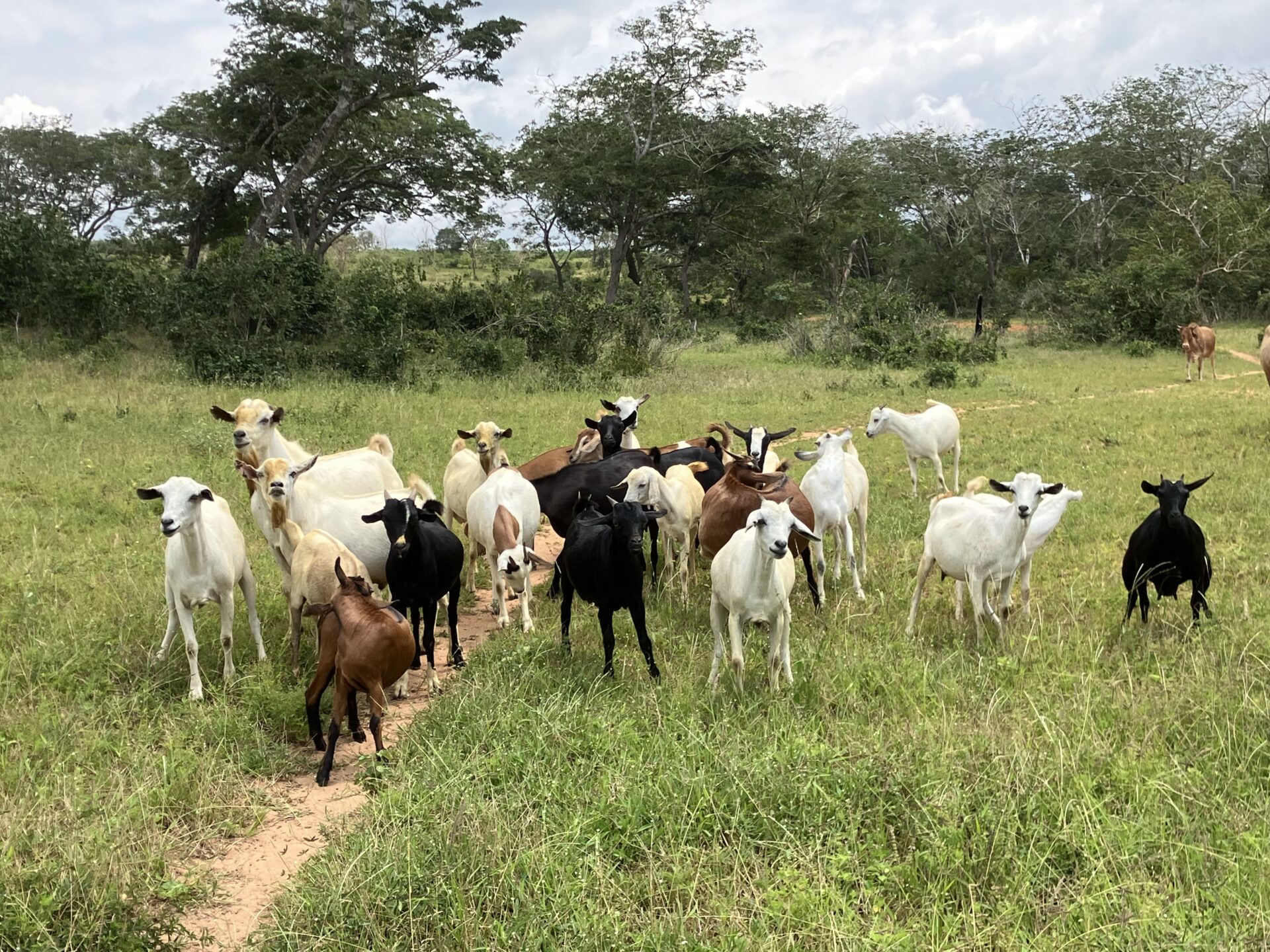
Goats are central to the livelihoods and sustenance of many people across Kenya. Credit: Mercy Kariuki.
WLT: Can you describe some of the people you met, and did they inspire you in any way?
Mercy: One of the most powerful things is seeing stories of resilience. I met a goat herder who shared with me a story of how he was being supported by Nature Kenya, with support from WLT. The herder was aided by Nature Kenya to access a goat herd from which he has built up an income and a sustainable livelihood. He has also been supported in producing seeds and learning how to save seeds from his crops which diversifies his income sources.
In Amboseli, I had the pleasure of attending a community meeting which saw the participation of over one hundred people. Some of these people are leasing their lands to the Big Life Foundation. Big Life Foundation offers a scholarship programme for young people to go to school, as well as employment as rangers or nature guardians. Local women are also at the core of these interventions, who are supported to g et capital to start their own businesses in bead work which is an activity that holds great cultural value. Not all these projects run by Big Life are funded by WLT, but it highlights how WLT works as part of a broader web of support for local people.

One of many community gatherings held by Big Life Foundation. Credit: Big Life Foundation.
In the Taita hills I saw the effects of the Keepers of the wild programme. It was fascinating to see how land funded directly by WLT – the Msidunyi reserve – and neighbouring land which was funded by other donors – are coming together like pieces of a puzzle. Together, our combined support and resources can have a greater impact towards protecting and conserving the remining forest patches suitable for endemic and threatened species.
I also really enjoyed meeting local people who are passionate about conserving the Taita hills and who have been supported by other funding and donors through tree nurseries and restoration projects as well as benefiting through selling the seedlings to other people who need them.
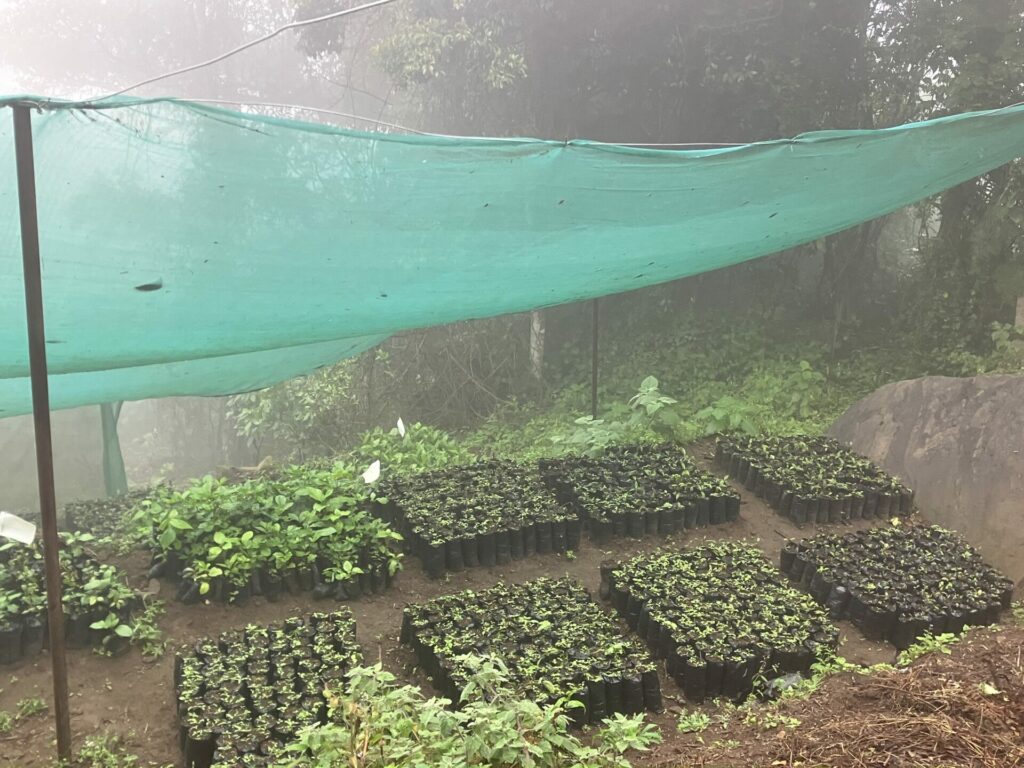
Seedlings being kept in a plant nursery for forest restoration activities in Taiti Hills. Credit: Mercy Kariuki.
WLT: What do you think the world can learn about conservation from our Kenyan partners?
Mercy: I think that the conservation work being done by WLT Kenyan partners reminds us that engagement with communities is not a one off or a ‘tick-box’ activity. Local people have their needs and lives which will continue whether or not the nature conservation organisation is there. The long-term sustainability of a conservation project depends on where and how much the communities are enabled to participate, engage, and have agency in each and every stage of the conservation. Communities can make or break a conservation project – and they will be the driving force that continues conservation into the future, long after a project has formally finished.
Click here to learn more about WLT’s Kenyan partners who you can support by making a donation to WLT.

